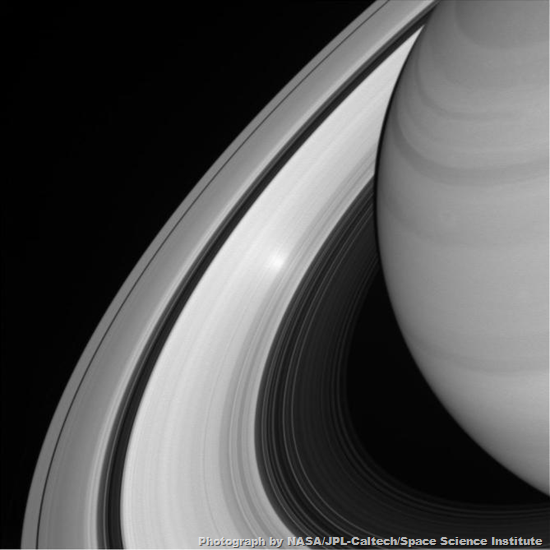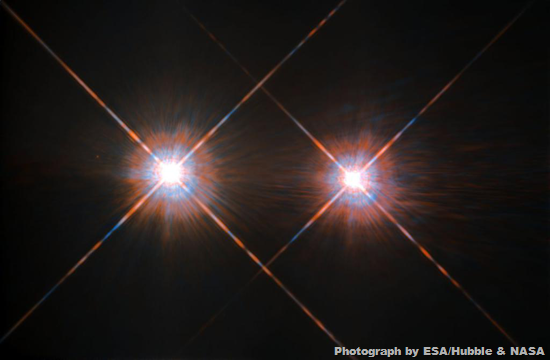
See Distant Galaxies Gleam and a Weird Spot on Saturn
By Victoria Jaggard, National Geographic News, 2 September 2016.
By Victoria Jaggard, National Geographic News, 2 September 2016.
This week, the most distant known galaxy cluster comes into view, the Juno spacecraft offers sharp new shots of Jupiter, and Hubble captures a portrait of the star system next door.
1. Far and Away
A kaleidoscope of colours reveals the galaxy cluster CL J1001+0220, the most distant cluster yet discovered. It's about 11.1 billion light-years away. Its discovery pushes back the origin of these massive objects by 700 million years.
2. Sun Spot
An eerie glow decorates Saturn's rings in this image from NASA's Cassini spacecraft. The bright spot is caused by an opposition surge, an optical effect that appears on the rings when the sun is directly behind the observer.
3. Dangerous Duo
On August 29, the Suomi NPP satellite captured Hurricane Madeline and Hurricane Lester headed toward the Hawaiian Islands. According to NASA, just 13 hurricanes have passed within 200 nautical miles of Hawaii's Big Island since record-keeping began in 1949.
4. By Jove
The watercolour swirls of Jupiter's north polar region shine in an image from NASA's Juno spacecraft. The probe made its closest flyby of Jupiter on August 27, coming within 437,000 miles of the giant planet.
5. Budding Youth
Astronomers were shocked to find an age-defying star more than 12,000 light-years away. The bright red object seen in the centre of this image has characteristics of very old and very young stars. Infrared observations suggest it's a protostar still in the process of formation.
6. Frosty Peaks
Mountains capped with methane snow extend toward Cthulhu Regio, a dark equatorial region on Pluto, in this close-up from NASA's New Horizons spacecraft. It's thought that methane from the atmosphere condenses into frost at high altitudes, coating the southern mountain range.
7. Eyes in the Dark
Hubble captured this image of the two brightest stars in Alpha Centauri, the closest star system to Earth. The third star in the system, Proxima Centauri, is now known to host a planet about as massive as Earth in its habitable zone.







No comments:
Post a Comment
Please adhere to proper blog etiquette when posting your comments. This blog owner will exercise his absolution discretion in allowing or rejecting any comments that are deemed seditious, defamatory, libelous, racist, vulgar, insulting, and other remarks that exhibit similar characteristics. If you insist on using anonymous comments, please write your name or other IDs at the end of your message.